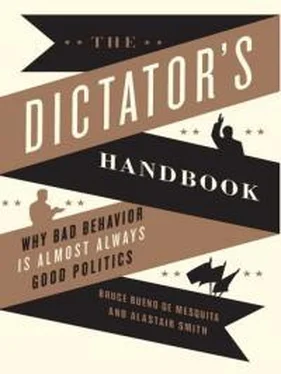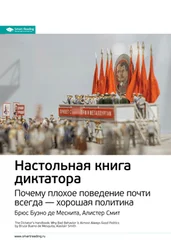Cuba’s infant mortality story is one of the better ones among countries with long histories of petty dictatorship. Indeed, even wealth proves a poor way to inoculate little children from untimely deaths. But having a big coalition is the best vaccine. Like all medicine, it is not perfect, but it makes a huge difference.
The world’s 36 governments that depend on the largest groups of essentials have thirty-one fewer infant deaths per 1,000 births than the forty-four governments that depend on the smallest groups of essentials. Comparing the same eighty countries but now based on per capita income, the poorest have fifteen more infant deaths per 1,000 births than the richest. Being rich does facilitate saving babies’ lives but not as much as being democratic!
Clean Drinking Water
For autocrats, money spent on people—like infants and little children—who are years away from contributing to the economy is money wasted. Resources should instead be focused on those who help the ruler stay in power now , not those who might be valuable in the distant future. When you see pictures and images flowing out of populations in crisis, it’s apparent that suffering at the extremes of the life span is hardly uncommon in autocracies. It’s not that these terrible conditions can’t be reversed; it’s that the autocrat must choose not to reverse them as a simple matter of cost. Funds diverted in such a fashion are taken right out of her own pocket and the pockets of the coalition.
Consider the availability of as basic and essential a public good as clean drinking water. In a world in which easily prevented, waterborne diseases like cholera, dysentery, and diarrhea kill millions of the young and old—non-workers—clean water would be a tremendous lifesaver. The problem is that these are lives that autocrats seem not to value.
Sure enough, drinking water is cleaner and more widely available in democratic countries than in small-coalition regimes, independent of the separate and significant impact of per capita income. Honduras, for instance, is a pretty poor country. Its per capita income is only $4,100. Yet, 90 percent of the people in Honduras have access to clean drinking water. Per capita income in Equatorial Guinea is more than $37,000, nine times higher than in Honduras.8 And yet only 44 percent of its people enjoy clean potable water. This is true even though both places have the same burden of a tropical climate; both were Spanish colonies; and both are predominantly Christian societies. The big difference: Honduras is considerably more democratic, with a larger group of essentials, than Equatorial Guinea. Is this comparison out of the ordinary? Not at all! To be sure, higher income countries on average do enjoy even higher quality drinking water than poorer countries. Looking within approximately equal per capita income slices of the world, however, those regimes that depend on a big coalition on average make quality drinking water readily accessible to almost their entire population, and those who depend on a smaller coalition lag behind by 20 percent or more. The availability and technology of clean water doesn’t favor democratic societies; democratic regimes favor ensuring that drinking water is clean.
Building Infrastructure
As we’ve demonstrated, even a nasty dictator provides the people with basic education and essential health care so that they can work at making the autocrat rich. There is one more public goods program that is necessary to translate labor into his or her wealth. Everything the workers make has to get out to the market so that the leader can sell the product of the workers’ labor for money. That means there is a need for roads to transport what’s been made to markets where people have money.
Nevertheless, there is still a balance when it comes to infrastructure. Since roads run in two directions, one must be careful not to build too many roads or, especially, roads to the wrong places. Roads are very costly to build and it is easy to hide their true costs. This makes them a good source of graft, which in turn makes constructing them attractive. But having a country too well connected can lead to new regional power centers—political, economic, or otherwise—that undermine the autocrat. And if things ever heat up sufficiently to encourage rebellion, the very roads that autocrats build can come back to haunt them. Shoddy infrastructure is often an intentionally designed feature of many countries, not a misfortune suffered unwillingly.
Zaire’s (today’s Democratic Republic of the Congo) Mobutu Sese Seko once told Rwanda’s president Juvénal Habyiarama, “I’ve been in power in Zaire for thirty years, and I never built one road.” Why? As he explained to Habyiarama, “Now they are driving down your roads to get you.”9 Indeed, when Mobuto came to power in 1965, Zaire had about 90,000 miles of roads. Thirty-two years later, when he was finally deposed, only about 6,000 miles remained, just enough to sell goods and not enough to make it easy to get to Mobutu. So, roads to market: yes. Roads to get you out of the country: yes. Other roads: no.
Consider how straight or curvy the roads are from the center of capital cities to the city’s largest airport. Of course, just how straight the road is depends on a number of factors. There’s topography, how sprawling the capital city is, the technology when the road was built, and how wealthy the society is. And then there is the size of the winning coalition.
Wealth is not randomly distributed. Places that depend on broad-based support to keep the government in power tend to be wealthy too. That might lead us to think that airport highways are especially straight in wealthy—read, large-coalition—societies, since it is rich governments that can most easily compensate people for tearing down their houses to make efficient roads from the city to the airport. And yet, that isn’t the case.
Topography, unlike wealth, isn’t dictated by politics. A landscape spattered with wide waterways and high mountains is likely to make the road from the capital city to its airport pretty curvy regardless of the type of government that runs the society. To just plow straight ahead in such circumstances means building tunnels and long bridges. Those are expensive. Tearing through villages is expensive too if the townspeople need to be properly compensated when the government invokes its right of eminent domain to knock down houses. And the people who need to be compensated in such circumstances may well happen to be both influential and essential. If the townsfolk whose houses are in the way of an airport road are not influential or essential, then it is cheaper to go straight ahead than to skirt village after village.
If the choice of route were just about economics one might think that straight roads from city to airport are especially prevalent in rich countries. But if politics trumps economics, then straight roads will more often be the province of petty dictatorships rather than representative—and rich—democracies. That the difference between driving distance and the distance as the crow flies is related to politics, and especially to how many essentials a leader needs, is rather interesting and perhaps surprising, but related they are.
We calculated the ratio of driving distance to the distance as the crow flies from the major airport serving each national capital for 158 countries.10 A low ratio means a fairly straight road; higher ratios, more curves. Only two of the thirty lowest ratios—places where the driving distance is almost equal to the distance as the crow flies—fall in democracies, taking the average coalition requirements for governance into account over the past thirty years (1981–2010). Portugal and Canada have the straightest roads to their respective capital-city airports among societies whose leaders rely on lots of essentials to hold power. Portugal has the world’s thirteenth lowest ratio and Canada is twenty-eighth. Which countries have the ten lowest ratios? Answer: Guinea, Cuba, Dominica, Colombia, Afghanistan, Pakistan, Yemen, Ecuador, Ethiopia, and Equatorial Guinea. This certainly is not a who’s who of democracy. Only Ecuador and Colombia’s governments, among this motley crew, are making real progress toward dependence on a large coalition. The average coalition size for these ten by our estimation method is 42 out of a possible score of 100.11 The world’s average is 62; that is, 50 percent higher!12
Читать дальше












